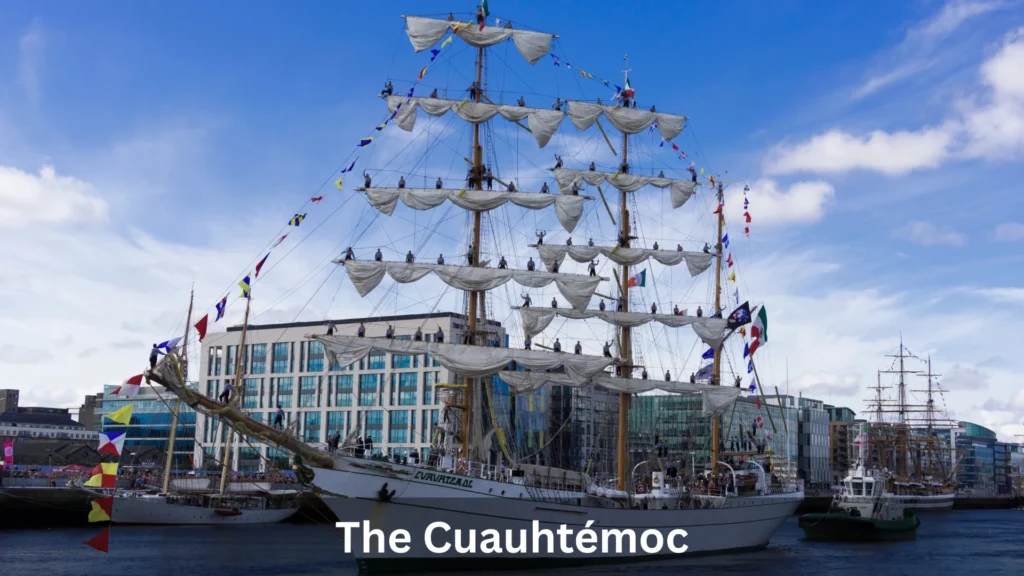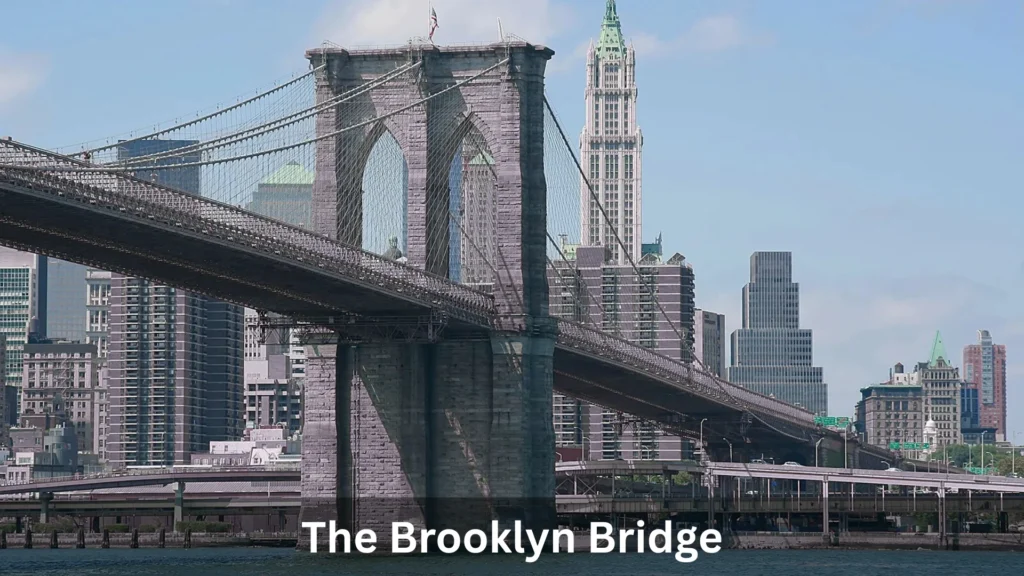Key Takeaways
- Mexican Navy Ship Collision with Brooklyn Bridge: The Cuauhtémoc, a Mexican Navy training ship, struck the Brooklyn Bridge on May 17, 2025, killing two crew members and injuring 22.
- The tragedy highlights persistent maritime safety concerns by echoing previous collisions, such as the Francis Scott Key Bridge accident in 2024.
- Investigations are underway, with the ship’s voyage data recorder expected to reveal critical details about mechanical failures or navigational errors.
- The Brooklyn Bridge, a historic landmark, sustained no structural damage, but the event raises questions about maritime protocols in busy urban waterways.
- The Cuauhtémoc was on a global goodwill tour, symbolizing Mexico’s naval pride, making the tragedy a poignant setback for its diplomatic mission.
A Shocking Collision Shakes New York’s Iconic Brooklyn Bridge
On the warm evening of May 17, 2025, the bustling Brooklyn promenade was alive with tourists and locals soaking in the vibrant New York City atmosphere. The famous Brooklyn Bridge towered majestically over the East River, a testament to engineering prowess and urban connectedness. But in an instant, the serene scene turned chaotic as the Mexican Navy training ship Cuauhtémoc collided with the bridge’s underside, sending shockwaves through the city and beyond. The tragic incident claimed two lives, injured 22 crew members, and left onlookers grappling with a surreal spectacle.
This wasn’t just another maritime mishap—it was a stark reminder of the fragility of even the most robust infrastructure when faced with human error or mechanical failure. As investigations unfold, the Mexican Navy ship collision with Brooklyn Bridge raises critical questions about maritime safety, urban waterway management, and the lessons we must learn from history to prevent such tragedies.
The Cuauhtémoc: A Symbol of Pride Meets Tragedy
The Cuauhtémoc, a 300-foot, steel-hulled, three-masted barque, stands as more than a vessel—it serves as a powerful, seafaring emblem of Mexico’s rich maritime heritage. Known as the “Knight of the Seas,” it has sailed over 756,085 nautical miles, visiting 212 ports in 64 countries since its commissioning in 1982. On April 4, 2025, it embarked from Acapulco on a 254-day global goodwill tour, carrying 277 crew members, including a record 64 women. The mission was to strengthen naval education and spread Mexico’s message of peace, with stops planned in 22 ports across 15 countries, from the Caribbean to Europe.

Docked at New York’s South Street Seaport Museum for five days of public viewing, the Cuauhtémoc was a star attraction, welcoming dignitaries and media. It was set to join the Sail4th 250 flotilla in 2026, celebrating America’s 250th anniversary with the largest-ever gathering of international tall ships. But as it departed Pier 17 for Iceland on that fateful Saturday, disaster struck.
What Happened: A Collision Caught on Camera
Around 8:20 p.m., as the Cuauhtémoc navigated the East River, its towering 160-foot masts—30 feet taller than the Brooklyn Bridge’s 127-foot navigational clearance—struck the bridge’s underside. The incident was caught on dramatic eyewitness recordings, which showed crew members frantically clutching to the rigging as masts snapped and debris rained onto the deck. The ship, which was flying a Mexican flag and white lights, floated dangerously close to the bridge because to its poor clearance.
According to New York City Mayor Eric Adams, the ship had experienced a power failure.NYPD Chief Wilson Aramboles also corroborated this early conclusion, stating that “mechanical issues” were the most likely cause.The collision killed two crew members who fell from the masts, with 19 others injured, two critically. The Mexican Navy reported 22 total injuries, with 19 hospitalized. Over 100 fire and EMS personnel responded, setting up dual command posts on both sides of the river to manage the crisis.
Flavio Moreira, a witness who had been strolling along the Brooklyn promenade, described the surreal scene to CNN, saying that it kept coming closer and closer, and he didn’t think it was right. He mentioned seeing crew members swinging back and forth as the masts hit, struggling to hold on. Although the incident was brief, it was a heart-stopping moment for all who witnessed it.
A History of Collisions: Lessons Unlearned?
The Mexican Navy ship collision with Brooklyn Bridge isn’t the first time the iconic structure has been struck. Similar instances are documented in historical records:
- 1921: While being towed, the schooner Edward J. Lawrence struck the bridge, causing minor damage.
- 1935: Three masts on the German freighter Tirpitz were bent when it collided with a steel girder.
- 1986: The New York Times reported that a South Korean cargo had scraped the underside of the bridge.
More recently, the March 26, 2024, collapse of Baltimore’s Francis Scott Key Bridge—caused by the Singaporean-flagged Dali losing power and crashing into the structure—killed six construction workers and exposed vulnerabilities in maritime safety. The parallels are eerie: both the Dali and Cuauhtémoc suffered power losses, veered off course, and collided with critical infrastructure. These recurring incidents beg the question: Are we doing enough to prevent such disasters?
Investigating the Crash: What the Data Will Reveal
The National Transportation Safety Board (NTSB) is leading the investigation, with Mexico’s involvement due to the Cuauhtémoc’s international status. A key focus is the ship’s voyage data recorder, often called a “black box.” According to CNN transportation analyst Mary Schiavo, a former U.S. Department of Transportation inspector general, the recorder will provide critical insights into the ship’s mechanics, control inputs, power loss, and environmental factors like river currents and depth.
Schiavo noted that investigators are likely already reviewing this data, alongside examining communication logs for any lapses. The Cuauhtémoc’s ceremonial tradition of sailors climbing masts during departures—a visually striking but risky practice—may also come under scrutiny, as the two fatalities resulted from falls during the collision.
The Brooklyn Bridge: A Resilient Icon
Remarkably, the Brooklyn Bridge emerged unscathed. Inspections confirmed no structural damage, and after a 40-minute closure, traffic resumed. Designed by John A. The Roebling Bridge was the longest suspension bridge in the world when it was finished in 1883. It connects the Manhattan and Brooklyn boroughs and is 6,016 feet long overall, with a major span of 1,595.5 feet. Every day, it carries about 107,000 cars, 32,000 pedestrians, and 4,000 cyclists.

Its resilience is a testament to its engineering. The bridge was extensively rebuilt between 1944 and 1954, with wider roads and stronger trusses. Remaining a major artery and cultural landmark, it was designated a National Historic Landmark in 1964 and a National Historic Civil Engineering Landmark in 1972. Ongoing rehabilitation projects, like the 2019–2023 tower and arch repairs, ensure its longevity, but the Cuauhtémoc collision underscores the need for stricter maritime oversight in its vicinity.
A Nation Mourns: Mexico’s Response
Mexican President Claudia Sheinbaum said that her country’s condolences and prayers were with the families of the two crew members who perished aboard the Cuauhtémoc. She noted that the Mexican ambassador and consulate were actively collaborating with New York authorities to facilitate the Mexican Navy’s support for those injured. The vessel was later relocated to Pier 36, where the remaining 250 passengers were able to disembark safely.
The tragedy is a blow to Mexico’s naval pride. The Cuauhtémoc, operated by the Heroic Naval Military School, has trained generations of cadets over its 42-year history. Its global tours are diplomatic missions, showcasing Mexico’s commitment to peace and maritime excellence. This incident, occurring during a high-profile visit, casts a shadow over its legacy.
Preventing Future Tragedies: What Needs to Change?
The collision between a Mexican Navy ship and Brooklyn Bridge identifies a number of areas that require improvement:
- Maritime Safety Protocols: Power losses, as seen in both the Cuauhtémoc and Dali incidents, suggest a need for redundant systems and stricter maintenance standards.
- Navigational Clearances: The Brooklyn Bridge’s 127-foot clearance is insufficient for tall ships like the Cuauhtémoc. Should such vessels be rerouted or required to lower masts?
- Urban Waterway Management: Busy waterways like the East River demand real-time monitoring and communication between ships and port authorities.
- Ceremonial Practices: The tradition of sailors climbing masts, while symbolic, poses risks during complex maneuvers. Could safer alternatives be adopted?
Experts like Schiavo emphasize that data-driven investigations are key to systemic change. The NTSB’s findings will likely influence international maritime regulations, particularly for training vessels operating in urban environments.
A Call to Reflect on Safety and Legacy
The Cuauhtémoc collision is a sobering reminder that even symbols of pride and resilience—like the Brooklyn Bridge and the “Knight of the Seas”—are vulnerable to human and mechanical fallibility. As New York and Mexico mourn, the focus must shift to accountability and prevention. By learning from this tragedy, we can honor the lives lost and ensure safer seas for future generations.
Conclusion
The Mexican Navy ship collision with Brooklyn Bridge is more than a headline—it’s a call to action. As the Cuauhtémoc’s broken masts fade from viral videos, the deeper story persists: a need for vigilance, innovation, and respect for the delicate balance between human ambition and the environments we navigate. Let this tragedy be a turning point, not a footnote, in the ongoing quest for maritime safety and global cooperation.


